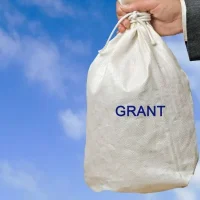The Climate Action Window represents a pivotal opportunity for NGOs, community leaders, and grant seekers to engage in meaningful environmental initiatives. This funding mechanism is designed to support projects that address the pressing challenges posed by climate change, fostering resilience and sustainability within communities. As the world grapples with the consequences of climate change, from extreme weather events to rising sea levels, the urgency for action has never been more pronounced.
The Climate Action Window not only provides financial resources but also encourages innovative solutions that can be scaled and replicated across various contexts. Understanding the nuances of the Climate Action Window is essential for those looking to secure funding. This initiative often emphasizes collaboration among stakeholders, including local governments, businesses, and civil society organizations.
By fostering partnerships, the Climate Action Window aims to create a holistic approach to climate action that leverages diverse expertise and resources. For NGOs and community leaders, this means that successful proposals will likely highlight collaborative efforts and demonstrate how their projects align with broader climate goals. Engaging with local communities to identify their specific needs and challenges can significantly enhance the relevance and impact of proposed initiatives.
Identifying Key Focus Areas for Climate Action
Identifying Key Focus Areas for Climate Action
To effectively harness the potential of the Climate Action Window, it is crucial to identify key focus areas that resonate with both funders and local communities. These focus areas often include renewable energy, sustainable agriculture, waste management, and biodiversity conservation. Each of these domains presents unique opportunities for innovation and community engagement.
Empowering Communities through Renewable Energy and Sustainable Agriculture
For instance, projects aimed at promoting renewable energy can empower communities to reduce their carbon footprint while simultaneously creating jobs in green technology sectors. Moreover, sustainable agriculture initiatives can address food security while mitigating the impacts of climate change on local ecosystems. By promoting practices such as agroecology and permaculture, NGOs can help farmers adapt to changing climatic conditions while enhancing soil health and biodiversity.
The Role of Waste Management in Climate Action
Waste management projects can also play a significant role in climate action by reducing landfill contributions and promoting recycling and composting initiatives. This not only helps to minimize the environmental impact of waste but also contributes to a more sustainable future.
Aligning with Global Goals and Local Needs
Identifying these focus areas not only aligns with global climate goals but also addresses local community needs, making proposals more compelling to potential funders.
Prioritizing Strategies for Climate Action
Once key focus areas have been identified, the next step is to prioritize strategies that will effectively address these issues. This involves assessing the specific challenges faced by communities and determining which strategies will yield the most significant impact. For example, if a community is grappling with frequent flooding due to climate change, prioritizing strategies such as building resilient infrastructure or implementing natural flood management techniques may be essential.
Additionally, it is important to consider the scalability of proposed strategies. Funders are often interested in projects that can be expanded or adapted to other contexts. Therefore, NGOs should think critically about how their initiatives can serve as models for other communities facing similar challenges.
This might involve developing training programs or creating toolkits that can be shared widely. By prioritizing strategies that not only address immediate needs but also have the potential for broader application, organizations can enhance their chances of securing funding while contributing to a larger movement for climate resilience.
Navigating the Application Process
Navigating the application process for funding through the Climate Action Window can be daunting, but understanding its intricacies can significantly improve an organization’s chances of success. The first step is to thoroughly review the guidelines provided by the funding body. These guidelines typically outline eligibility criteria, funding limits, and specific requirements for project proposals.
It is essential to ensure that your organization meets these criteria before investing time in developing a proposal. Once you have a clear understanding of the requirements, it is beneficial to create a detailed project plan that outlines objectives, activities, timelines, and expected outcomes. A well-structured proposal should clearly articulate how the project aligns with the funder’s priorities and demonstrate its potential impact on climate action within the community.
Additionally, including a robust budget that justifies expenses and highlights any co-funding or in-kind contributions can strengthen your application. Engaging stakeholders in the proposal development process can also provide valuable insights and enhance the credibility of your project.
Resources and Support for Prospective Applicants
For NGOs and community leaders seeking funding through the Climate Action Window, numerous resources and support systems are available to facilitate the application process. Many organizations offer workshops, webinars, and training sessions focused on grant writing and project development specifically tailored to climate action initiatives. These resources can provide valuable insights into best practices for crafting compelling proposals and navigating complex funding landscapes.
In addition to training opportunities, prospective applicants can benefit from networking with other organizations engaged in similar work. Building relationships with peers can lead to collaborative opportunities and shared resources that enhance project proposals. Online platforms and forums dedicated to climate action can serve as valuable spaces for exchanging ideas and experiences.
Furthermore, many funding bodies provide technical assistance or consultation services to help applicants refine their proposals before submission.
Key Considerations for Successful Climate Action Applications
Alignment with Funder’s Mission and Priorities
First and foremost, it is crucial to ensure that your project aligns with the funder’s mission and priorities. Tailoring your proposal to reflect the specific goals of the funding body demonstrates a clear understanding of their objectives and increases your chances of securing support.
Measurable Outcomes and Evaluation Methods
Another important consideration is the inclusion of measurable outcomes and evaluation methods in your proposal. Funders are often interested in understanding how they will assess the impact of their investment. Clearly outlining how you plan to measure success—whether through quantitative metrics or qualitative assessments—can enhance your proposal’s credibility.
Sustainability and Long-term Impact
Additionally, consider incorporating a sustainability plan that outlines how your project will continue to thrive beyond the funding period. This demonstrates foresight and commitment to long-term impact.
By understanding the funding landscape, identifying key focus areas, prioritizing effective strategies, navigating the application process adeptly, leveraging available resources, and considering critical factors for success, organizations can position themselves favorably in securing funding for impactful climate action initiatives. As we collectively strive towards a more sustainable future, these efforts will play a vital role in building resilient communities capable of facing the challenges posed by climate change head-on.
For organizations and individuals looking to deepen their understanding of environmental conservation and seeking funding opportunities, the article “Navigating the Climate Action Window: Key Focus Areas and Priorities for Prospective Applicants” is highly relevant. A related resource that could be of interest is the Mohamed Bin Zayed Species Conservation Fund Grant Program 2024. This grant program focuses on providing targeted financial support to individual species conservation initiatives, promoting the leadership of scientists, and emphasizing the importance of species in the broader ecological spectrum. This aligns well with the broader themes of climate action and biodiversity preservation discussed in the main article.
FAQs
What is the Climate Action Window?
The Climate Action Window refers to the current period of time in which urgent and impactful action is needed to address climate change and its effects. It represents a critical opportunity for individuals, organizations, and governments to implement measures that can mitigate and adapt to the impacts of climate change.
What are the key focus areas for prospective applicants in the Climate Action Window?
The key focus areas for prospective applicants in the Climate Action Window may include but are not limited to: renewable energy, sustainable transportation, climate-resilient infrastructure, nature-based solutions, climate finance, and community engagement. These areas are crucial for addressing climate change and achieving sustainable development goals.
What are the priorities for prospective applicants in the Climate Action Window?
The priorities for prospective applicants in the Climate Action Window may vary depending on the specific context and needs of the community or region. However, common priorities may include: reducing greenhouse gas emissions, promoting climate resilience, fostering innovation and technology transfer, enhancing climate education and awareness, and promoting social equity and inclusivity in climate action efforts.
How can prospective applicants navigate the Climate Action Window effectively?
Prospective applicants can navigate the Climate Action Window effectively by conducting thorough research and analysis to understand the specific climate challenges and opportunities in their respective areas. They can also engage with relevant stakeholders, seek partnerships and collaborations, and develop comprehensive and innovative proposals that align with the priorities and focus areas of the Climate Action Window. Additionally, staying informed about funding opportunities and policy developments related to climate action is crucial for successful navigation.








































